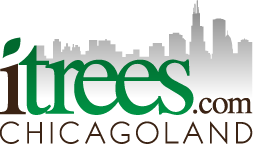Looking for help?
Find answers to your questions
Why it's Important to Plant the Right Tree in the Right Place
Written by: Luke Miller for The Arbor Day Foundation
The decision to plant a tree is something that can provide you with a sense of accomplishment and something to admire for decades. However, it is not a decision that should be made without some careful consideration.
I’ve been working for the Arbor Day Foundation for more than a decade now and I have had several opportunities to plant small seedlings and watch them develop into young trees. This act gives me great joy and I love trees for all the great things that they provide. However, there have been a few instances where some thoughtful planning would have made me feel better about the locations I chose.
Planting a tree is a rewarding experience, so it is my hope that after reading this post you will find some helpful tips to help guide you to plant the best tree in the best location.
Why do you want to plant a tree?
This is a serious question that you need to ask yourself because it will determine what type of tree you are looking for. Some of the more common motivations for planting trees are to produce shade, add aesthetic value to your landscape, define a property boundary or provide a windbreak. Trees planted in locations that shade homes or block the prevailing winter winds can decrease the amount of energy that is consumed to heat and cool a home. Whichever option you choose selecting the right tree for this process can vary widely.
Temperature
Before you decide to plant anything, I strongly recommend that you determine what hardiness zone you are in. Hardiness zone is an indication of your average annual minimum temperature and will help you in determining what species of trees and plants will survive in your area. You can visit our hardiness zone map to look up your hardiness zone, and even find a list of trees that will work in your climate.
Species selection
This is another important consideration to make. Just because a tree will grow in your hardiness zone, doesn’t mean that you should plant it there. It would be a good idea to plant a species of tree that is native to your area. These are trees that have successfully survived where you live for thousands of years.
Other environmental factors to consider
Soil Structure and moisture requirements
The soil that a tree is planted in is very important and often overlooked. You can contact your local county extension office to have an analysis completed. This will help identify any issues that you may want to be aware of prior to planting a tree.
The moisture requirements of the tree are also an important consideration. Are you in an area that is experiencing drought? Is the planting site you are considering often wet for extended periods? These are important questions to ask yourself to make sure that you are selecting a tree that will be compatible with these environmental factors.
Pests/Disease
Some trees are more prone than others to diseases and pests. Native trees have a better disease and pest resistance, but how a tree is planted and the site that it is planted in can affect its overall health. Trees that become diseased are often attacked by insects (pests). This is because the disease weakens the tree’s defenses, making it vulnerable to infestation by pests. Sometimes trees are cultivated to exploit specific traits. Sometimes you can find trees at your local nursery that are bred because they show a natural resistance to diseases or pests.
Tips to avoid utility lines
One of the most tragic things that can be done to your new tree is planting it too close to utility lines. If the wrong tree is placed too close to a power line, that tree will endure a lifetime of corrective pruning and will end up looking disfigured and become more prone to disease and structural issues.
Overhead lines
Here are some guidelines that are recommended for safe distances from overhead power lines. Your utility company should have guidelines that they will share with you, but most seem to adhere to low, medium or tall classification for trees based on their mature height
Low zone (trees that will reach a mature height of 20ft or less) — plant 15 to 25 feet away from power lines and 8 to 10 feet away from your home.
Medium zone (trees that will reach a mature height of 35 feet) — plant 25 to 50 feet away from power lines and 12 to 15 feet away from your home.
Tall zone (trees that have a mature height of more than 35 feet) — plant at least 50 feet away from lines and 15-20 feet from your home.
What about underground lines?
The biggest risk to interfering with underground lines exists at the time of planting. Never assume that your underground utilities are buried deep enough that you will not disturb them by digging. Please make sure to contact your utility or call 811 prior to plant trees on your property.
It is also important to keep in mind that the root of your tree will spread out along the ground in all directions at a distance that is close to the mature height of your tree. This is important because the root system could be damaged if the line needs to be repaired.
Where to go for additional help
- Your state or urban forester’s office will often have tree selection guides available.
- Utilities often have publications that highlight trees that are recommended for planting near power lines.
- Your cooperative extension office is a great local resource that can advise you on what trees to plant on your property.
L. Miller (2016, November 11) Why it's Important to Plant the Right Tree in the Right Place. Retrieved from http://arbordayblog.org/treeplanting/need-know-planting-right-tree-right-place/

